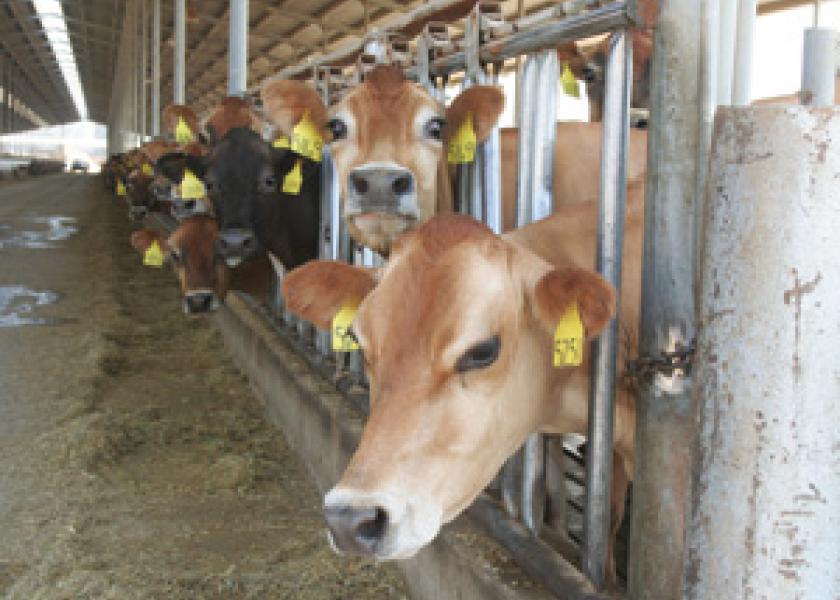Is the Past Prelude?

Feed costs squeezed profits last year. Will 2012 be a repeat?
Compared to the previous two years, many U.S. dairy producers saw an improved and even profitable turnaround in 2011. Milk prices rose to near-record levels and exports resumed their strong pace.
"2011 was a good year, but we need good years to make up for the hole created in 2009," says California dairy producer Ben Slegers. High input costs, however, put a big dent in the profits that $20 to $25 milk would typically bring.
"Last year was the highest for dairy feed costs since we began keeping records," says Jim Dunn, an agricultural economist at Penn State.
Bonus Content: More on Feed Prices
- Battered U.S. Dairies Face Uncertain Future
- Milk Production Costs Headed to All-Time Highs
- Ethanol's Dark Livestock Legacy
Total operating costs for U.S. dairies rose every month from January through November, reaching $17.06 per cwt., according to USDA’s Economic Research Service. Feed costs again were the largest expense, climbing in October to the year’s highest level at $14.41 per cwt. Those costs mean 2011 likely will rival—or even surpass—2008’s high-water mark.
Corn rose to more than $300 per ton for many dairies last year. In the Texas High Plains, dairy producer Larry Hancock paid up to $315 per ton for alfalfa hay, $410 for cottonseed and $260 for ground corn.
"Due to the growth in our area and severe drought the last few years, feed is in short supply," says Hancock, who milks 4,200 cows. "We have had to add acreage, learn to farm ourselves and buy feed from as far away as Montana."
Along with the Texas drought, several key dairy regions face increased feed challenges from weather problems. Hurricane Irene, tropical storms and flooding in several Northeast states downgraded the quality of homegrown feed. "Farmers will be running out of feed this spring and scrambling for supplies," Dunn says.
Like other dairy producers, Slegers is apprehensive about high feed costs in 2012. California dairies must inventory hay for the winter months when it’s not harvested. With alfalfa hay costing more than $300 a ton, many producers have had no choice but to lock in the forage at those high levels.
"If milk prices go down, we’re looking at red numbers," Slegers says.
And, in fact, milk prices are projected to decline in the coming months, as rising per-cow output increases overall milk production. USDA forecasts the 2012 All-Milk price at $18.10 to $18.90 per cwt., down from $20.05 to $20.15 in 2011.
2012 milk prices of $17 to $17.25 per cwt. are anti-cipated by Robert Matlick, a partner in the Frazer LLP accounting firm. He pegs dairies’ cost of production at $16.50 to $18.50, depending on debt levels, management styles and other factors.
"From a numbers standpoint, a lot of producers are looking hard at getting more production out of the cow," says Matlick, whose firm has numerous dairy clients across the U.S. "They learned in 2009 that cutting costs is not the right thing to do to improve margins.
"We’re very cautious about 2012," he adds. "Milk prices and feed costs remain volatile, and there’s a lot of uncertainty in the global market."







